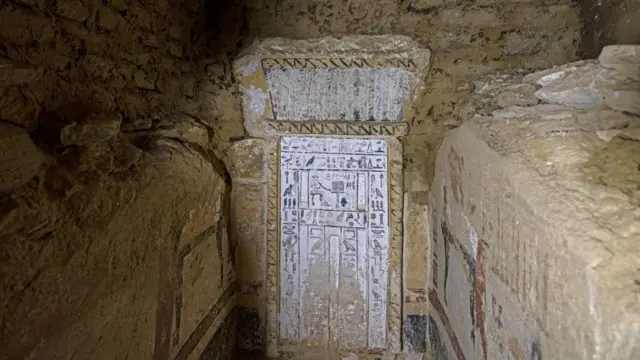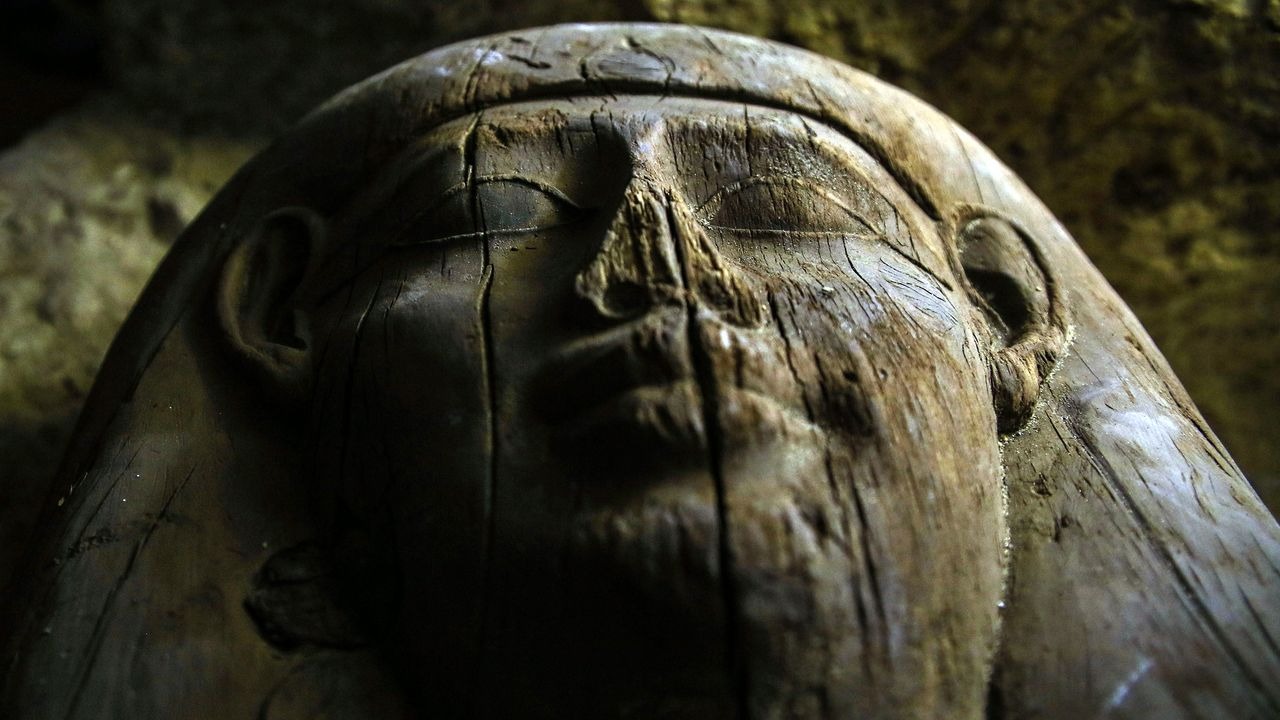An Astonishing Claim Emerges
For centuries, the tombs and sarcophagi of Egypt have fascinated the world. From the discovery of Tutankhamun’s golden burial chamber to countless lesser-known finds scattered across the Nile Valley, each excavation seems to open a new window into the life and beliefs of one of history’s most remarkable civilizations.
But one particular claim has ignited heated debate: the alleged discovery of a creature sealed inside an Egyptian sarcophagus. According to reports circulating online and whispered in archaeological circles, an unusual set of remains—neither clearly human nor entirely animal—was uncovered during an excavation of an ancient burial site. The find, if genuine, challenges not only our understanding of Egyptian funerary practices but also the limits of human imagination.
What Was Allegedly Found?

Descriptions vary, but accounts often describe:
-
A body or skeletal form that does not match standard human proportions.
-
Elongated features or unusual bone structures.
-
Evidence of mummification techniques, suggesting intentional preservation rather than accidental inclusion.
While some dismiss these details as exaggerations or misinterpretations, others argue that Egypt’s long history of symbolic hybrid figures—such as jackal-headed Anubis or falcon-headed Horus—makes the discovery plausible as either a ritual object or a symbolic burial.
Symbolism of Hybrid Beings in Ancient Egypt
To understand why such a find sparks fascination, one must look at Egyptian religion and mythology. Ancient Egyptians often depicted their gods as creatures combining human and animal traits:
-
Anubis, the god of embalming, had the head of a jackal.
-
Horus, god of the sky, was portrayed with a falcon’s head.
-
Sekhmet, goddess of war, was represented as a lioness.
These hybrid beings were not seen as monsters but as divine representations of power, protection, and cosmic order. If a “creature” were indeed found inside a sarcophagus, it could have been a ritual figure designed to embody these beliefs—or possibly the remains of an animal mummified alongside humans.
The Practice of Animal Mummification

Archaeologists know that animals played a central role in Egyptian burial practices. Millions of mummified cats, ibises, crocodiles, and other creatures have been found, many preserved with the same care given to human burials. These animals were often offerings to gods or sacred companions for the afterlife.
In this light, the so-called “creature” may simply have been a unique form of animal mummy, distorted by age, decay, or misunderstanding. Over millennia, organic remains can shift and fuse, creating the impression of something unnatural.
Scientific Possibilities
Experts urge caution before drawing conclusions. Without peer-reviewed evidence, photographs, or physical analysis, much of what circulates online remains speculative. However, science offers several plausible explanations for such a discovery:
-
Misidentified Remains
Bones can easily be distorted by time. A collapsed ribcage, twisted spine, or partial skeleton could appear “non-human” to the untrained eye. -
Composite Mummification
Egyptians sometimes combined animal parts in ritual burials. For example, crocodile mummies have been found stuffed with bones from multiple animals. -
Myth and Hoax
The fascination with Egyptian tombs has long inspired exaggeration and fabrication. From Victorian-era myths of “mummy curses” to staged relics in early museums, sensational stories often outpace scientific fact.
Why Stories Like This Endure

The notion of a mysterious “creature in a sarcophagus” resonates because it challenges the boundary between myth and reality. Egypt itself was a civilization where mythology and daily life were deeply intertwined. To modern audiences, such a find seems to suggest that the myths might not have been just stories but reflections of hidden truths.
Moreover, the mystique of sealed tombs fuels imagination. Once a sarcophagus is opened after thousands of years, the idea that something shocking could lie inside is irresistible—whether it be treasure, curses, or unexplainable remains.
Lessons From Past Discoveries
History is filled with examples of misunderstood artifacts:
-
The Antikythera Mechanism, initially thought to be debris, later turned out to be an ancient analog computer.
-
The “Baghdad Battery” sparked debate about ancient electricity, though it may simply have been a storage jar.
-
Countless “giant skeletons” reported in the 19th century turned out to be misidentified fossils or hoaxes.
The Egyptian “creature” could follow a similar path: initially sensational, but eventually explained through careful research.
Cultural Impact
Regardless of its authenticity, the story of a sarcophagus “creature” has already left an imprint on popular culture. Social media debates, speculative documentaries, and even fictional works have seized upon the tale. For many, it embodies the enduring allure of Egypt—a place where history and mystery intertwine so tightly that one can never be sure where fact ends and legend begins.
Preserving the Real Legacy of Egypt
While sensational claims grab attention, archaeologists remind us that the true wonders of Egypt are no less astonishing:
-
Intricately painted tombs that tell the stories of daily life 3,000 years ago.
-
Hieroglyphic inscriptions that preserve entire histories of kings and queens.
-
Advances in medicine, mathematics, and astronomy that laid foundations for future civilizations.
These are the real treasures—proof that ancient Egypt’s ingenuity and creativity rival anything imagined in myths.
Conclusion: A Mystery Worth Exploring
The claim that a “creature” was found inside an Egyptian sarcophagus may never be fully verified. It could be a misunderstood artifact, an animal mummy, or simply a modern legend. Yet its power lies in what it represents: our endless curiosity about the past and our desire to believe that the world still holds secrets beyond our understanding.
Egypt has always been a land where myth and history converge. Whether the “creature” was real or imagined, the story reminds us of the mystery that lingers in every sealed tomb and the awe that rises every time we dare to open one.
